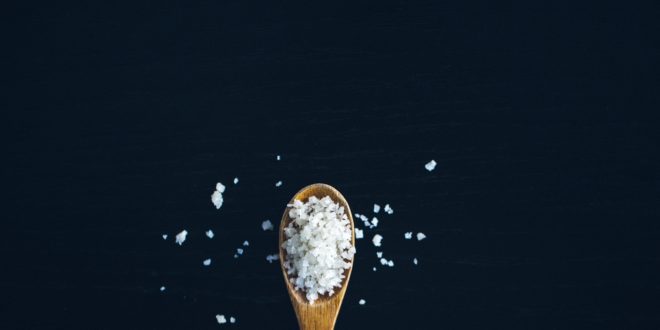What’s your favourite food? We’re guessing that, whatever it is, it’s likely to contain salt – the very ingredient we’re most often advised by our doctor to cut back on. It’s no surprise that we favour salt, because the human body can’t survive without it, so in an evolutionary sense, we’re hard-wired to seek it out. The problem comes, however, when we really do have to reduce our intake because, try as we might to limit the sodium in our diet, there are so many unexpected foods that contain it.

Uh-oh!
Much of the salt we consume (in some cases, as much as 80%) comes, not from the salt shaker, but from the processed foods we put in the grocery trolley. That means that, no matter how hard you try to avoid adding salt to your food, you’re still going to get an unhealthy dose. Help yourself cut back on salt by preparing your meals from scratch using fresh ingredients. If you’re not used to doing this, keep it simple with meat and veg, and loads of salad.
‘Sauce’ of the problem
While you’d expect store-bought salad dressings and sauces (such as tomato, barbecue, and sweet chilli sauce, for example) to contain salt, you may be surprised to learn just how much! It’s not uncommon for a well-planned, cooked-from-scratch meal to suddenly become a health-hazard with the addition of just a couple of tablespoons of these products which can contain up to 15-20% of a normal daily salt intake! Play it safe and mix your own salad dressings at home. Check the net for easy-to-prepare low-salt sauces that will give you all the flavour you crave without the sodium.
Cereal secrets
Just when you thought breakfast would be the least of your problems, it turns out that cereals are often high in sodium. So high, in fact, that a single-serve can see you consuming between 10 and 15% of a normal daily intake (and we all know how easy it is to shake more from the packet than we intend!). Choose old favourites such as plain porridge oats instead, or mix up your own muesli from oats, nuts, seeds and dried fruit.
Baked goods
Cakes, muffins and biscuits may not taste salty, but they will almost always contain baking powder, a raising agent that contains over 1,250 milligrams of sodium per teaspoon (it’s estimated that the average person needs only 186 mg of sodium per day to function properly). With just 1/8 of a teaspoon of baking powder delivering 157 mg of salt, it’s not difficult to see why store-bought baked goods can be a problem to those cutting back on salt. If you want that muffin, bake it at home using a low-sodium raising agent (look for it in health stores).
Hot chocolate
It may seem harmless, but many prepared drinking chocolates contain more sodium than may be good for you. Check the labels but, better still, brew your own from a teaspoon of cocoa which contains just 1mg of sodium.










Join the Discussion
Type out your comment here:
You must be logged in to post a comment.